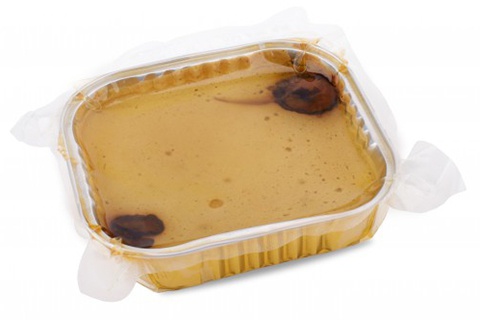Aluminum is a silvery white light metal. malleable. Commodities are often made into rods, flakes, foils, powders, ribbons and filaments. In humid air, an oxide film can be formed to prevent metal corrosion. Aluminum powder and aluminum foil can burn violently when heated in the air, and emit a blinding white flame. Soluble in dilute sulfuric acid, nitric acid, hydrochloric acid, sodium hydroxide and potassium hydroxide solution, insoluble in water. The relative density is 2.70. The melting point is 660°C. The boiling point is 2327°C.
It is widely used for its light weight, good electrical and thermal conductivity, high reflectivity and oxidation resistance. Aluminum used for daily utensils is usually called “steel fine” or “steel type”.
Due to the strong activity of aluminum, it is not easy to be reduced, so it was discovered late. After the Italian physicist Volt created the battery in 1800, the British chemist David and the Swedish chemist Berzirius both tried to separate aluminum from bauxite by using electric current from 1808 to 1810, but they were unsuccessful. Berzelius gave this unobtainable metal a name alumien. This comes from the Latin alumen. The term is a general term for astringent alum in medieval Europe, and refers to a mordant for dyeing cotton fabrics. Aluminum’s later Latin name aluminum and element symbol Al are derived from this.
In 1825, the Danish chemist Oster published the process of experimentally preparing aluminum. In 1827, German chemist Wuler repeated Oersted’s experiment and continuously improved the method of producing aluminum. In 1854, the German chemist Deville used sodium instead of potassium to reduce aluminum chloride to produce ingot metal aluminum.
The main purpose
The use of a substance largely depends on the properties of the substance. Because aluminum has many excellent properties, aluminum has a very wide range of uses.
(1) The density of aluminum is very small, only 2.7 g/cm. Although it is relatively soft, it can be made into various aluminum alloys, such as hard aluminum, super hard aluminum, anti-rust aluminum, cast aluminum, etc. These aluminum alloys are widely used in manufacturing industries such as aircraft, automobiles, trains, and ships. In addition, space rockets, space shuttles, and artificial satellites also use a large amount of aluminum and its aluminum alloys. For example, a supersonic aircraft is approximately 70% aluminum and its alloys. Aluminum is also used in large quantities in shipbuilding, and a large passenger ship often uses thousands of tons of aluminum.
(2) The conductivity of aluminum is second only to silver and copper. Although its conductivity is only 2/3 of that of copper, its density is only 1/3 of that of copper. Therefore, the quality of aluminum wire is only that of copper wire when transporting the same amount of electricity. half. The oxide film on the surface of aluminum not only has the ability of corrosion resistance, but also has a certain degree of insulation, so aluminum is widely used in the electrical manufacturing industry, wire and cable industry and radio industry.
(3) Aluminum is a good conductor of heat, and its thermal conductivity is three times greater than that of iron. In industry, aluminum can be used to make various heat exchangers, heat dissipation materials and cooking utensils.
(4) Aluminum has good ductility (its ductility is second only to gold and silver), and it can be made into aluminum foil thinner than 0.01 mm at 100 ℃ ~ 150 ℃. These aluminum foils are widely used for packaging cigarettes, candies, etc., and can also be made into aluminum wires and bars, and can be rolled into various aluminum products.
(5) The surface of aluminum is not easy to be corroded due to its dense oxide protective film, and is often used to manufacture chemical reactors, medical equipment, refrigeration equipment, petroleum refining equipment, oil and gas pipelines, etc.
(6) Aluminum powder has a silver-white luster (generally, the color of metal in powder form is mostly black), and is often used as a coating, commonly known as silver powder and silver paint, to protect iron products from corrosion and to be beautiful.
(7) When aluminum burns in oxygen, it can emit a lot of heat and dazzling light. It is often used to make explosive mixtures, such as ammonium aluminum explosives (mixed with ammonium nitrate, charcoal powder, aluminum powder, soot and other combustible organic substances) , combustion mixtures (such as bombs and shells made of thermite can be used to attack targets that are difficult to catch fire or tanks, cannons, etc.) and lighting mixtures (such as 68% barium nitrate, 28% aluminum powder, and 4% shellac).
(8) Thermite is commonly used to smelt refractory metals and weld rails. Aluminum is also used as a deoxidizer in the steelmaking process. Aluminum powder, graphite, titanium dioxide (or other high-melting point metal oxides) are uniformly mixed in a certain ratio, coated on the metal, and calcined at a high temperature to make a high-temperature resistant cermet. It has important applications in rocket and missile technology. .
(9) The reflective performance of aluminum plate to light is also very good, and the reflection of ultraviolet rays is stronger than that of silver. The purer the aluminum, the better its reflective ability, so it is often used to manufacture high-quality reflectors, such as solar cooker reflectors.
(10) Aluminum has sound-absorbing properties and good sound effects, so aluminum is also used in broadcasting rooms and ceilings in modern large-scale buildings.
(11) Low temperature resistance. When the temperature of aluminum is low, its strength increases instead of brittleness. Therefore, it is ideal for low temperature device materials, such as refrigerators, freezers, Antarctic snowmobiles, and hydrogen oxide production devices.
(12) is an amphoteric oxide
Post time: Jun-13-2023





